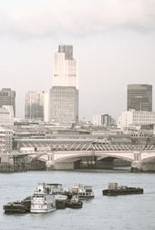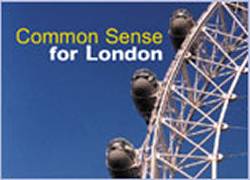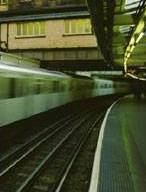London’s Local Government  The launch of the new Greater London Authority(GLA) in July 2000 brought a system called two-tier local government back to the capital after a gap of 14 years. The GLA combines a strategic citywide government for London made up of a directly elected Mayor and a separately elected Assembly, and boroughs, which are responsible for the running of most of the day-to-day services. The relationship between the two is carefully set out in a concordat , agreed by both sides, which covers issues such as "who represents London". This makes sure things don't get mixed up and the GLA doesn't do what the other boroughs and public bodies in London are doing. When fully staffed, there will be about 400 staff to help the Mayor and Assembly in their duties. The launch of the new Greater London Authority(GLA) in July 2000 brought a system called two-tier local government back to the capital after a gap of 14 years. The GLA combines a strategic citywide government for London made up of a directly elected Mayor and a separately elected Assembly, and boroughs, which are responsible for the running of most of the day-to-day services. The relationship between the two is carefully set out in a concordat , agreed by both sides, which covers issues such as "who represents London". This makes sure things don't get mixed up and the GLA doesn't do what the other boroughs and public bodies in London are doing. When fully staffed, there will be about 400 staff to help the Mayor and Assembly in their duties.
 What does the Mayor do? What does the Mayor do?
The Mayor prepares plans on issues from transport to buildings and land use to culture to development to the environment, and from culture to land use, directs the GLA and sets budgets for the GLA, Transport for London, the London Development Agency, the Metropolitan Police and London's fire services. The Mayor has a range of specific powers and duties, and a general power to do anything that will promote economic and social development, and environmental improvement, in London. Before using many of his powers the Mayor must consult with Londoners, and in all cases, the Mayor must promote equality of opportunity.  What is the London Assembly? What is the London Assembly?
The London Assembly is a examining body with 25 members, all elected by voters in London, at the same time as they vote for the Mayor, every 4 years. The Assembly scrutinises the Mayor's activities, questioning the Mayor about his or her decisions. The Assembly is also able to investigate other issues of importance to Londoners, publish its findings and recommendations, and make proposals to the Mayor. So what does the GLA and the Boroughs actually do? The GLA has responsibilities for: - Policing,
- Transport,
- Fire and Emergency Planning,
- Economic Development,
- Culture,
- Environment,
- Health
- It also promotes tourism, culture and sport.
The responsibilities of the 32 boroughs and the Corporation of London include: - Education
- Social Services,
- Housing
- Roads
- Planning
- Street cleaning and waste disposal
- Libraries
Who's The Mayor at the moment?  Ken Livingstone was elected Mayor of London on 4 May 2000. His aim is that London should be a leading world city, in terms of sustainability, prosperity and diversity. He has set as his priorities to rebuild London's failing transport system (He chairs Transport for London), to ensure that London has the number and quality of police officers it needs to reduce crime and the fear of crime throughout Greater London, and to celebrate London's diversity through all aspects of the city's culture. Ken Livingstone was elected Mayor of London on 4 May 2000. His aim is that London should be a leading world city, in terms of sustainability, prosperity and diversity. He has set as his priorities to rebuild London's failing transport system (He chairs Transport for London), to ensure that London has the number and quality of police officers it needs to reduce crime and the fear of crime throughout Greater London, and to celebrate London's diversity through all aspects of the city's culture.
London Links The above applies to the political process in the United Kingdom and follows the laws of the UK.
- The Pupiline Team
|
|

 The launch of the new
The launch of the new  What does the Mayor do?
What does the Mayor do? What is the London Assembly?
What is the London Assembly? Ken Livingstone was elected Mayor of London on 4 May 2000. His aim is that London should be a leading world city, in terms of sustainability, prosperity and diversity. He has set as his priorities to rebuild London's failing transport system (He chairs Transport for London), to ensure that London has the number and quality of police officers it needs to reduce crime and the fear of crime throughout Greater London, and to celebrate London's diversity through all aspects of the city's culture.
Ken Livingstone was elected Mayor of London on 4 May 2000. His aim is that London should be a leading world city, in terms of sustainability, prosperity and diversity. He has set as his priorities to rebuild London's failing transport system (He chairs Transport for London), to ensure that London has the number and quality of police officers it needs to reduce crime and the fear of crime throughout Greater London, and to celebrate London's diversity through all aspects of the city's culture.